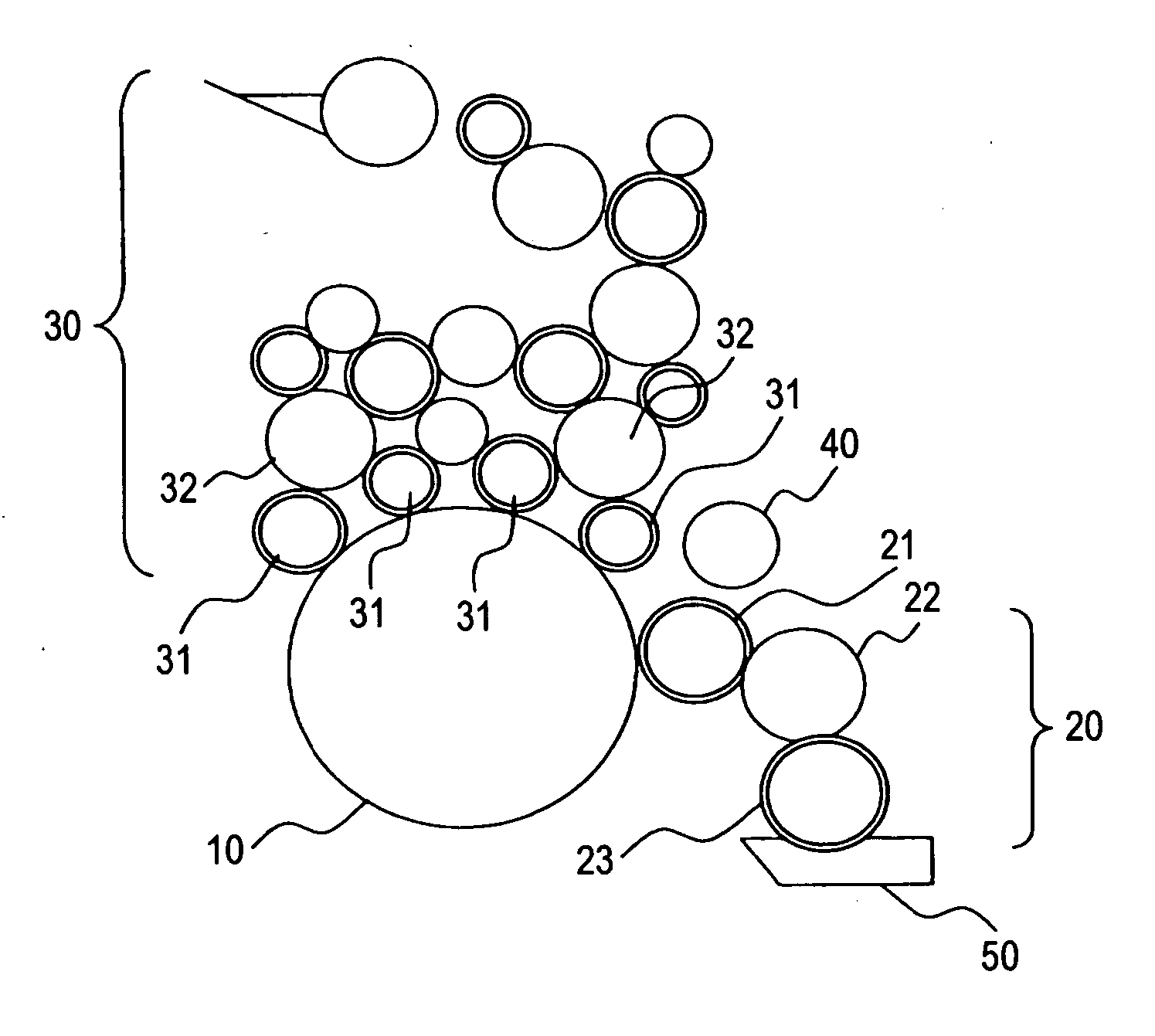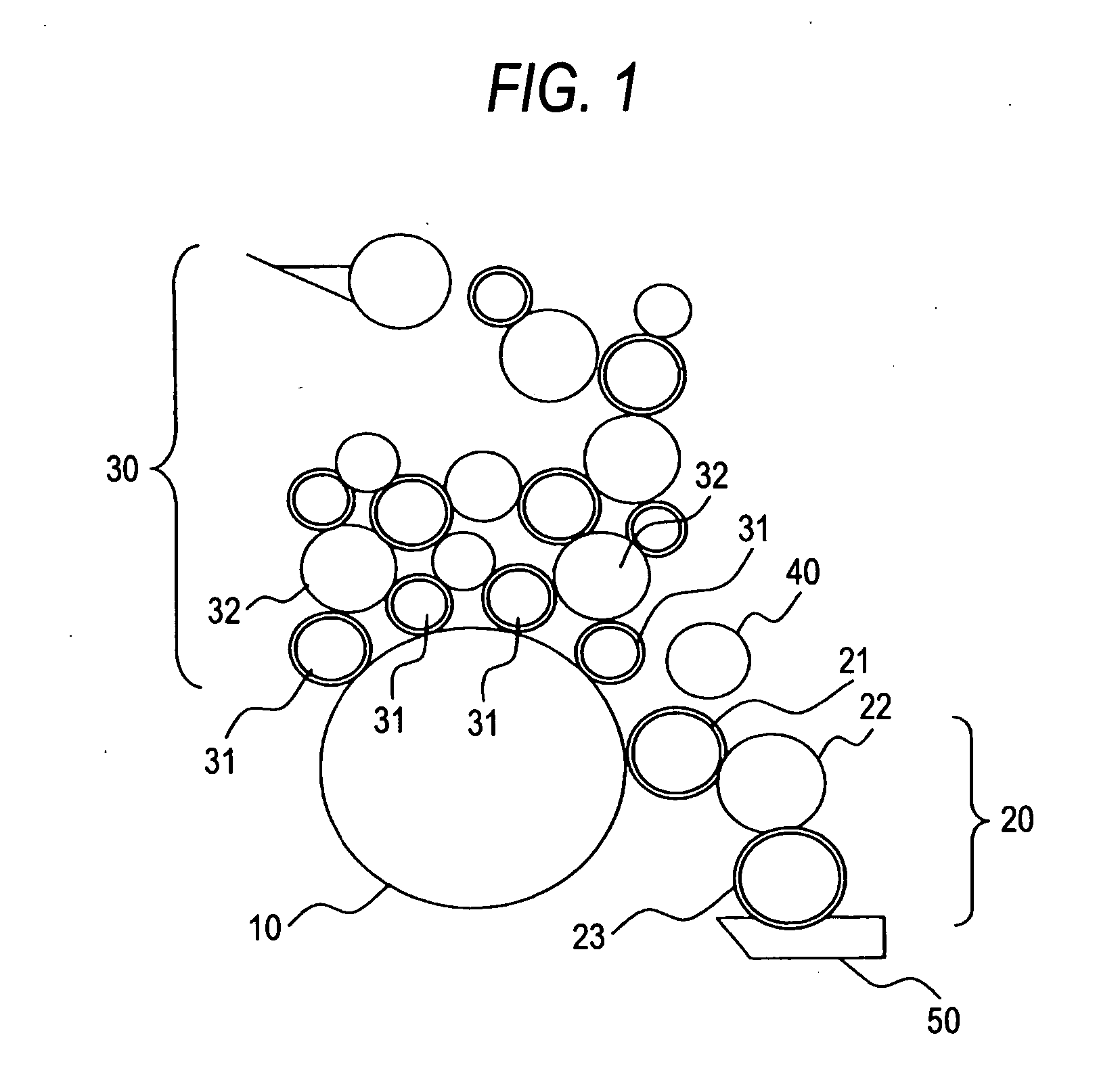Lithographic printing method
a printing method and lithographic technology, applied in the field of lithographic printing methods, can solve the problems of reducing workability and productivity, contaminating the non-image area, and unable to obtain printed materials free of contamination, so as to reduce paper loss, shorten time, and facilitate fine dispersion
- Summary
- Abstract
- Description
- Claims
- Application Information
AI Technical Summary
Benefits of technology
Problems solved by technology
Method used
Image
Examples
example
[0253] The invention will be described with reference to examples and but the invention is not limited thereto.
1. Manufacture of Lithographic Printing Plate Precursor
1-1. Manufacture of Lithographic Printing Plate Precursor (1)
(1) Manufacture of Support
[0254] For removing the rolling oil of the surface, an aluminum plate having a thickness of 0.3 mm (material 1050) was subjected to degreasing treatment with a 10 mass % sodium alminate aqueous solution at 50° C. for 30 seconds, and then the aluminum surface was subjected to brush-graining with three nylon brushes planted with hairs having a hair diameter of 0.3 mm and a suspension of pumice stone and water of a median diameter of 25 μm (the specific gravity: 1.1 g / cm3), and the surface of the plate was thoroughly washed with water. The plate was immersed in a 25 mass % sodium hydroxide aqueous solution at 45° C. for 9 seconds for etching, and washed with water. After water washing, the plate was further immersed in a 20 mass %...
PUM
 Login to View More
Login to View More Abstract
Description
Claims
Application Information
 Login to View More
Login to View More - R&D
- Intellectual Property
- Life Sciences
- Materials
- Tech Scout
- Unparalleled Data Quality
- Higher Quality Content
- 60% Fewer Hallucinations
Browse by: Latest US Patents, China's latest patents, Technical Efficacy Thesaurus, Application Domain, Technology Topic, Popular Technical Reports.
© 2025 PatSnap. All rights reserved.Legal|Privacy policy|Modern Slavery Act Transparency Statement|Sitemap|About US| Contact US: help@patsnap.com



